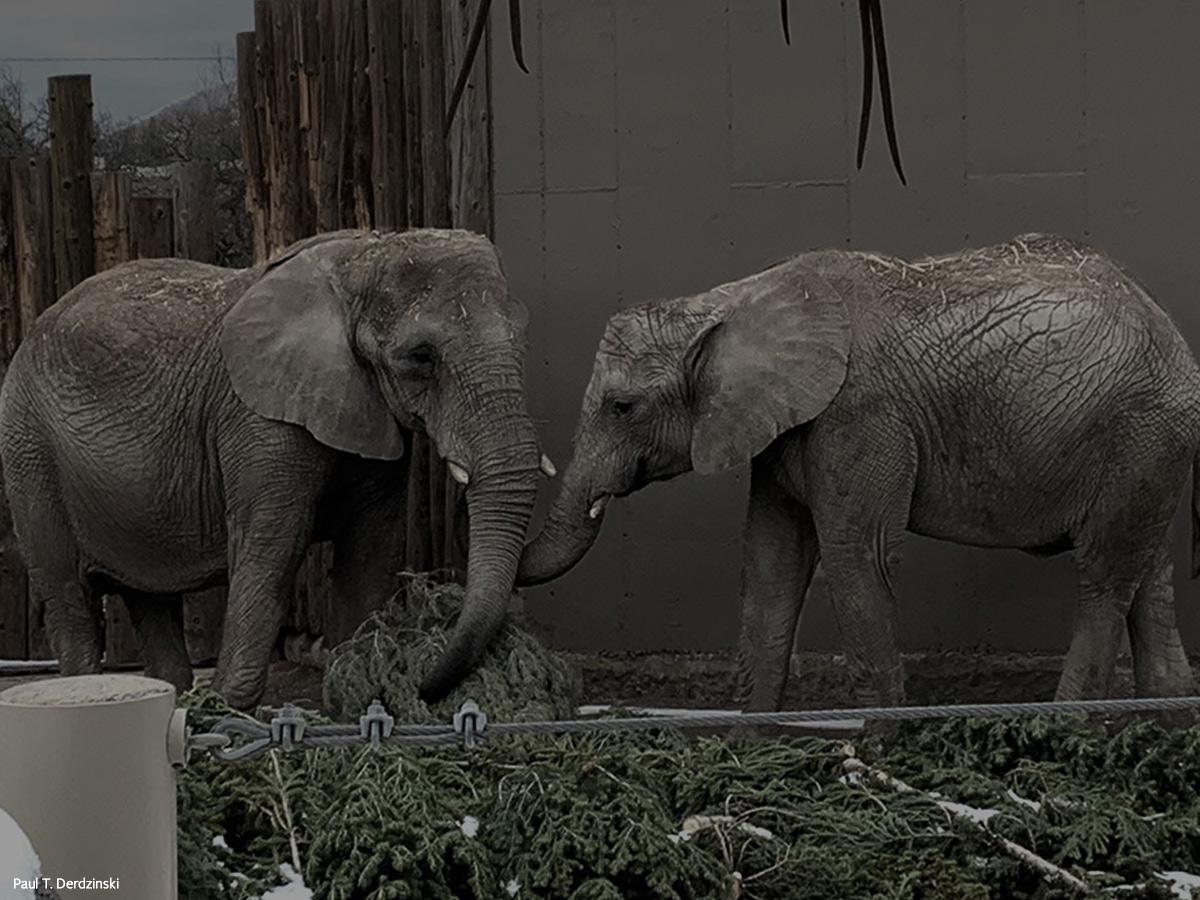Ask Hogle Zoo to Shut Down Its Elephant Exhibit!
This alert is no longer active, but here for reference. The elephants are moving, but they must go to sanctuary.
The Hogle Zoo in Utah keeps mother-daughter duo Christie and Zuri confined and isolated in a small, cold-weather enclosure. Keeping only two female elephants together, instead of a minimum of three, violates the minimum standards set by the Association of Zoos and Aquariums (AZA) that recommends large social groupings for improved welfare. But having too small a social group for elephants isn't the only reason Hogle Zoo should lose its AZA accreditation; besides its failing best practices, it also puts elephants and the public at mortal risk.
Potentially aggressive, unpredictable elephant behavior is the reason behind protected contact, a life-saving AZA Standard requiring an effective barrier between elephants and the public and zoo staff. Yet Hogle Zoo has been allowing the public — notably very young children and even infants — to come into close or direct contact with elephants' trunks. The spaces in the cage through which the trunks emerge are large enough to drag a child through.
Another dangerous factor arising from direct contact between humans and other animals is disease transmission. Tuberculosis (TB), an infectious disease, can be fatal for elephants and some people. It has long existed in captive elephants and has infected numerous zoo staff at other facilities in recent years via zoonotic transmission, which is the transfer of diseases to humans from other animals.
But humans aren't the only ones at risk. A process known as reverse zoonosis has seen humans infect elephants with TB. Reverse zoonosis is suspected to have been the way tigers in the Bronx Zoo became infected with COVID-19 during the early phases of the pandemic. The tip of an elephant's trunk is akin to the nostrils on human faces; touching these parts of an elephant poses a risk of transmission should diseases be present in either species. Zoonotic transmission can be especially dangerous for young infants and children whose immune systems are still developing.
The new “feeding experience” offered by this Zoo brings people into close contact with elephants. Some suspect that these feedings were started to bring in extra money — fifteen dollars per person. The coronavirus pandemic has hit businesses hard across the country, but that is no excuse to keep elephants in social isolation and then further exploit them by encouraging people to pay to feed them, thereby putting the elephants and people — especially children — at risk. For all of these reasons, now is the ideal time for Hogle Zoo to begin looking at permanent accredited sanctuary retirement options for Christie and Zuri.

This alert is no longer active, but here for reference. The elephants are moving, but they must go to sanctuary.


